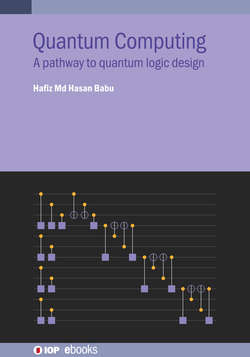Читать книгу Quantum Computing - Hafiz Md. Hasan Babu - Страница 16
На сайте Литреса книга снята с продажи.
1.6 The evolution of quantum computers
ОглавлениеQuantum computing is still in its emerging stages. There is a long way to go before a usably running quantum computer can be built, let alone brought to the market. However, progress in this new technology is occurring regularly and no chronological record can ever be complete. What follows is a brief timeline clarifying key areas of progress in quantum computing. Much of the technical development has been achieved in this century while most of the primary theoretical perspectives were laid down in the late twentieth century.
In 1980, Paul Benioff was the first to design a computer which operated under quantum mechanical principles. His idea of a quantum computer was based on Alan Turing’s famous paper tape computer, described in his article published in 1936. In 1981, Feynman proved that it was impossible to simulate quantum systems on a classical computer. His argument hinged on Bell’s theorem, written in 1964. In 1985, David Deutsch published a report describing the world’s first universal quantum computer. He showed how such a quantum machine could reproduce any realizable physical system. Enthusiasm for creating the first quantum computer was stimulated by Peter Shor’s algorithm in 1994. Shor described a method for factorizing large integers. This had serious implications for cryptography, which relies on this operation being difficult in order to keep codes secure. Shor’s algorithm searched for periodicities in long integer-sequences of repeated digits. It used the quantum principles of superposition to scour for periodicities in the astonishingly fast time of a few minutes. To perform this same computation on a classical computer would take longer than the age of the Universe. In 1996, Lov Grover used quantum mechanics to solve an old unstructured search problem. For example, if someone wants to match a large database of names with a long list of telephone numbers, a classical computer could only solve this problem by querying each name with a telephone number until it found the right one, which is not fewer than O(N) evalutions of the function. Grover’s quantum algorithm, however, produces the output value using only O(N) evaluations of the function.
In 2000, the first working five-qubit nuclear magnetic resonance (NMR) computer was put through its paces at the Technical University of Munich. Shortly after, the Los Alamos National Laboratory surpassed this feat with a working seven-qubit NMR quantum computer.
The year 2001 is known for the demonstration of Shor’s algorithm. A team at the IBM Almaden Research Center in California succeeded in factorizing the integer 15 into 5 and 3. They used a thimbleful of a bespoke liquid containing billions of molecules. The molecules were constructed from five fluoride and two carbon atoms, each with their own nuclear spin state. The molecules worked as a seven-qubit quantum computer when pulsed with electromagnetic waves and monitored using NMR.
In 2006 researchers offered a new functioning standard by monitoring a 12-qubit quantum system with only minimal decoherence. NMR quantum information processors were used to decrypt the computation. These quantum controls led to the hope that higher-qubit quantum computers might be available one day. The same year, scientists took a step closer to the building of a quantum gate, the quantum representation of a mathematical rule. Also in 2006, scholars created molecules of quantum-dot pairs. These have great potential for quantum computers, in particular if more complex elements can be created.
This book focuses on how quantum gates and quantum representations of different circuits are to be designed to make a complete quantum computer. Readers will be motivated to design such circuits and to make quantum representations of different sequential and logical circuits of their own with different examples and designs of the circuit.
